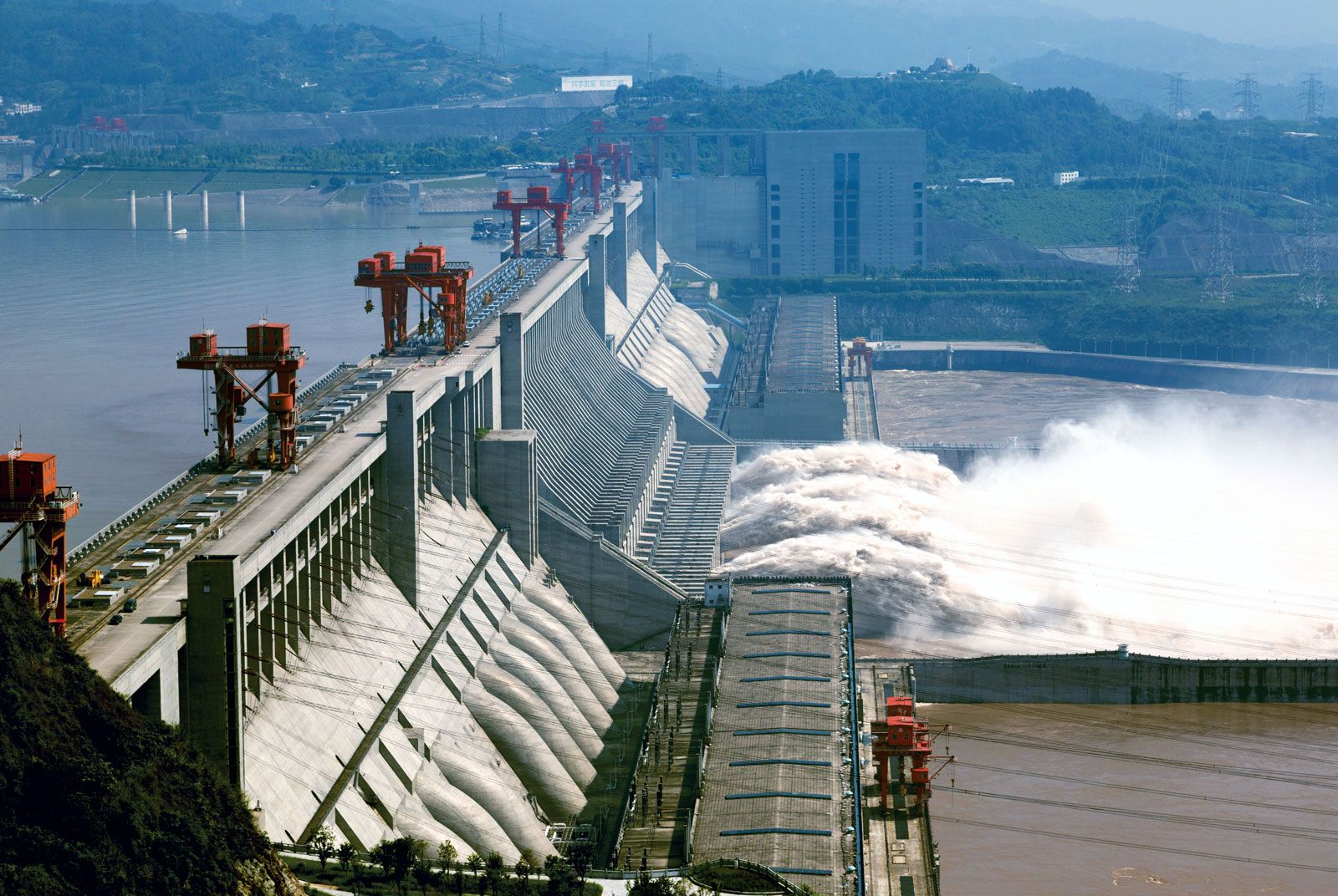Just across the international border with Arunachal Pradesh, China is preparing to build the world’s largest hydropower project on the Great Bend of the Yarlung Tsangpo river, known as Brahmaputra in India.
This is the 60 GW Metou mega dam which will add to and go beyond the series of other dams that China has build on the Yarlung Tsangpo.
This “mother of all dams” has in fact prompted India to prepare for the construction of a 11,000 MW on the Siang River in Arunachal Pradesh.
This single-stage dam is important as it will ensure that China is able to totally control the flow of water from the Yarlung Tsangpo, downstream where it is known as the Brahmaputra.
The River provides drinking water to 1.8 million people and any effort to dam the river in Tibet will curtail water flow in the lean season and trigger artificial floods in downstream countries like India and Bangladesh.
China claimed that the step was taken to maintain powerlines, but the sudden move affected millions of people living along the waterways in Southeast Asia, with Cambodia, Laos, Myanmar, Thailand, and Vietnam being the most affected. Earlier, in 2019, Chinese dams in the upper Mekong River basin retained a record amount of water.
India’s plans to construct a dam on the Siang River is a key counter to China’s water hegemony.
In the last few decades, China has been damming the Yarlung Tsangpo and its tributaries at regular intervals.
The proposed super dam in Metou county will be constructed at a remote stretch of the river known as the Great Bend.
Satellite imagery shows that China has begun construction of the access road and associated structures, to the dam site.
The dam site is at the eastern edge of the Himalayas near China’s border with the state of Arunachal Pradesh and at a place where the river makes a dramatic U-turn.
Here, the river elevation drops fiercely over 2,700 meters within a 50 km stretch, before it changes course towards India.
There are good reasons for India to consider building a dam on the Siang River.
The proposed dam design has storage capacity of over 9 billion cubic metres of water during peak monsoons, to act as a reserve, as and when, China reduces the water flow downstream.
It will also act as a flood prevention measure for downstream areas of Arunachal and Assam if China were to suddenly release water.
China has a history of using its dams to carry out transnational aggression.
In 2017, the water of Siang, a tributary of the Brahmaputra, turned black and became unsuitable for drinking, damaging the ecology and disrupting local agricultural production.
Indian officials publicly blamed China for the development.
The Yarlung Tsangpo is one of the world’s largest river systems. It originates in eastern Tibet’s Ngari region, flows 2,900 kms across southern Tibet along the Himalayas, and enters India through the state of Arunachal Pradesh.
As the lower riparian state, India’s location, places it at a disadvantage. India is dependent on these upstream flows for its agriculture and water security, making it vulnerable to any upstream activities by China.
Building dams in upstream Tibet enables China to use water as a geo-political tool.
China’s plan to construct a “mother of all dams” comes at a time when India has asked Pakistan to consider modification of the Indus Water Treaty under Article XII.
In effect, China is a “water hegemon”, as it manipulates water levels for irrigation, power generation, or flood control, on downstream countries in South and South East Asia.
A Stimson Centre study recalls how in 2021, China cut the water flow of the Mekong River without any warning by 50%, for three weeks.
China claimed that the step was taken to maintain powerlines, but the sudden move affected millions of people living along the waterways in Southeast Asia, with Cambodia, Laos, Myanmar, Thailand, and Vietnam being the most affected. Earlier, in 2019, Chinese dams in the upper Mekong River basin retained a record amount of water.
This was despite experiencing above-average rainfall during the wet season. Consequently, countries downstream faced an unprecedented drought.
Since then, Thailand, Cambodia, and Vietnam have experienced the most severe and prolonged droughts.
The region’s economy and food security have been adversely impacted. Farmers have lost crops, fish populations have dwindled, and reservoir levels have dangerously decreased.
Just one example of the impact of this man-made drought was seen on Cambodia’s Tonle Lap Lake where reduced waters led to fall in fishing by 50%.
The transnational nature of China’s water suzerainty has created conditions for India to become aware of the potential for upstream mischief by Beijing.
Therefore, by announcing plans to build a dam on the Siang River, India has asserted its water rights to reduce unpredictable actions by China.
China’s construction of the 60 GW dam on the Yarlung Tsangpo is the best of example of the water hegemony engaged in by Beijing as an upper riparian state.
Another instance of this weaponisation became apparent in 2017 after the 73-day Doklam border standoff with India in 2017, when China “abruptly” ceased to share hydrological data for the Brahmaputra River despite previous agreements.
It claims claim that the project is being constructed to increase the quality of life in Tibet and manage water scarcity, while meeting China’s goal of reaching a carbon emission peak before 2030 and carbon neutrality by 2060.
That is a long-term consideration that obfuscates the real geo-political agenda behind the dam construction.
Recall that in 2016, China had obstructed the flow of the Xiabuqu River, a Brahmaputra tributary located in Tibet near the Indian border.
On the face of it, the obstruction was done to facilitate the operation of the Lalho hydropower project.
China’s plan to construct a “mother of all dams” comes at a time when India has asked Pakistan to consider modification of the Indus Water Treaty under Article XII.
Thus, China is diplomatically signalling its support to Pakistan in its confrontation with India over the Treaty.
China’s weaponisation of transnational water resources thus poses a significant threat to regional stability in South Asia.
Another instance of this weaponisation became apparent in 2017 after the 73-day Doklam border standoff with India in 2017, when China “abruptly” ceased to share hydrological data for the Brahmaputra River despite previous agreements.
This was in contrast to Bangladesh which continued to receive uninterrupted data from China.
This behaviour by China reflects its intentions to use water resources as a geo-political tool against India within South Asia and beyond.









Comment